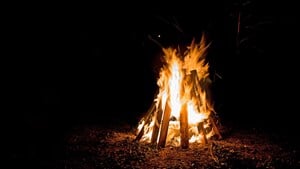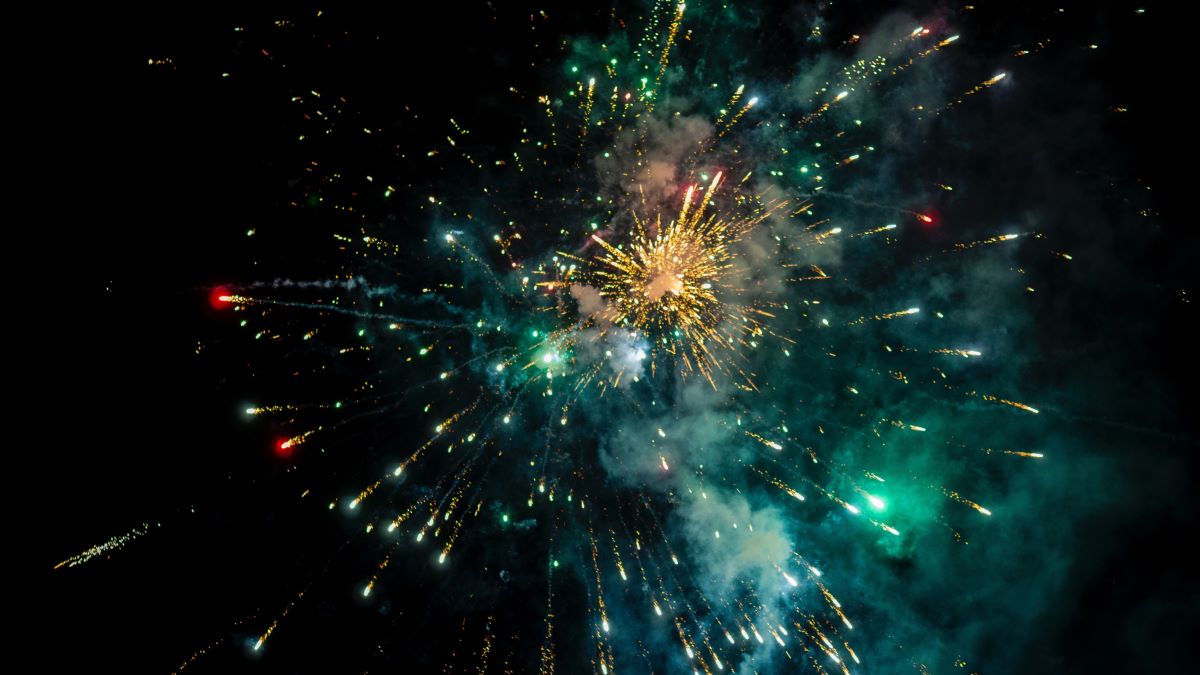Can I have a bonfire in my garden?
7 minute read

Whether you’re getting rid of garden waste, keen to cosy up on a summer’s evening in the garden or you’re looking forward to hosting your own party for Guy Fawkes night this winter, gathering around a bonfire with your nearest and dearest can be a whole lot of fun. However, fires can be extremely dangerous, posing a serious risk to you and others if they're not managed properly.
In this article, we take a look at what you can and can’t do when it comes to lighting a bonfire, to help you stay in line with the law. We’ve also included some useful tips on how you can light a bonfire safely and correctly.

Get a home insurance quote
Age Co helps homeowners over 50 find the right protection. We are 100% owned by Age UK and our profits go back to the charity.
Can I have a bonfire?
In short, the answer is yes.
However, it’s worth understanding the do’s and don’ts around lighting bonfires, whether you plan on doing this at home, or if you’re planning on lighting one in a public place. Keep reading to find out more about the laws around lighting bonfires, and how you can do so safely.
What is the law about bonfires?
Technically speaking, there is no UK law in place that says that you cannot have a bonfire at home. As a general rule of thumb, if carried out sensitively and correctly, the odd bonfire should not cause any major problems.
However, that being said, there are laws in place in regards to burning certain types of waste and preventing bonfires from causing a nuisance. The UK law states that you cannot get rid of household waste in such a way that it will cause pollution or pose a risk to the health of others ‒ including burning it. This means you should not burn materials such as plastic, rubber, engine oil or anything else that might produce harmful fumes. Aside from posing a risk to yourself and others, burning materials like these is actually considered a criminal offence. Instead, you should dispose of household waste in the appropriate manner. In this case, you should refer to your local council for guidance on waste disposal and recycling.
If you are found to be breaking these laws, or if your bonfire poses a risk to others, you could face a fine ‒ specifically if you light a fire and allow the smoke to drift across a road, meaning it becomes a danger to traffic.
Your local council has a responsibility to carry out investigations following any complaints received about smoke or fumes that could be considered as a ‘statutory nuisance’. In this case, an ‘abatement notice’ can be issued whereby a fine is issued.
What time can you have a bonfire?
Since there are no specific laws in place about domestic bonfires, as long as you are not burning inappropriate materials that could harm others or cause smoke to drift into a road, you could choose to have one during the day or at night.
Although, as previously stated, it’s extremely important to make sure that your bonfire does not cause a nuisance to others, regardless of what time of the day or night you choose to light it.
Where can I light a bonfire?
Aside from your own property, you might be wondering where else you can light a bonfire. The truth is, if you’re planning on having one in a public space, such as a beach or park, it’s likely there are restrictions in place. Before you have your bonfire in a public place, you must contact the local council, or the owner of the land, to find out if you are permitted to start a bonfire in the first place.
If you discover that you are legally allowed to light a bonfire in public, it’s important to take the health and safety of both yourself and others into consideration. You should also be aware of the potential fire risk to nearby properties. If any damage does occur as a result of your bonfire, there may be serious consequences, so it’s crucial that your bonfire is planned and executed extremely carefully and safely.

It’s also worth noting that there are strict rules in place regarding fireworks. The UK law states that you cannot set off fireworks between 11 pm and 7 am in a residential street or in a public area. The only exceptions are Bonfire Night on November 5th, which has a cut off of midnight, as well as Chinese New Year, New Year’s Eve and Diwali, which have a cut off of 1 am.
How to light a bonfire safely
There is much more to lighting a bonfire than throwing some sticks and branches into a heap in your back garden. So, if you’re keen to light your own bonfire, but you want to do it safely and correctly, check out our top tips below.
Step 1: Find a safe location
Ideally, a bonfire should be built in an open space, on the ground on a suitable firebase, such as on a bed of stones, away from buildings and other flammable items. Do not build it too close to a house, and keep it a safe distance away from any fencing, dried debris and overhanging branches. The aim is to keep the bonfire itself small.
Step 2: Consider the wind direction
Before lighting the bonfire, it’s a good idea to take the wind direction into consideration. This will determine which way the smoke will drift once it is lit and whether it could go over nearby roads, which isn’t allowed. This will also prevent the smoke from blowing into neighbouring gardens and causing a nuisance for others.
Step 3: Start to build it up
The secret to a good bonfire is in the building, and there are a few items you may need in order to get it going. Tinder is used to initially light the fire and includes dried leaves, paper, bark, pine cones and pine needles. Then, you’ll need small and medium-sized kindling, including dry sticks. Finally, you’ll need larger logs for when the fire is getting a bit hotter. The drier the materials are the better.
Use the tinder pieces to build a kind of tipi shape. Building them in this way allows air to get into the whole structure and it will burn for longer while using less fuel. Next, the medium kindling can go on next. Be sure to place it at 45-degree angles with each piece meeting in the middle to retain that tipi shape.
Step 4: Build up the kindling
Continue to layer the kindling in the same way, alternating the small, medium and large logs. The larger bits of wood can be added in intervals around the base of the fire. The idea is to keep gaps between each layer so that oxygen can get in.
Step 5: Light the fire
Once the structure is built, it’s time to light the fire. Drop a match into the middle of the tipi so that the tinder at the centre, such as leaves and pinecones, is lit first. This will begin to burn very quickly and then will begin to burn the layer of kindling. You should never try to accelerate the bonfire using substances like petrol or oil, as this could be very dangerous.
The bonfire should get going quite quickly. When it starts to burn low, continue to add wood to build it up again. It’s a good idea to keep a hose or a bucket of sand nearby when lighting a fire. Having quick and easy access to a running water supply is vital in case anything goes wrong, allowing you to extinguish the flames or dampen down the fire until you have it under more control.
You should also never leave the fire unattended. Take extra care if there are children present, making sure they stay at a safe distance from the fire itself at all times. You should keep pets indoors too.
Step 6: Putting the fire out
Leaving a fire to naturally put itself out can be dangerous, particularly as the hot ash will remain hot for some time, despite not glowing red. Put it out using water and then add some dirt on top for good measure.
As long as you’re careful and follow these steps, you should be able to enjoy a safe bonfire from the comfort of your own garden.
For more information on getting the most out of your home and later life, you can check out the rest of Age Co's Useful Articles.

Win £500 in the Age Co Prize Draw!
Simply let us know your Home and Car Insurance renewal dates or just share your email address to be in with a chance of winning. See the full terms and conditions via the form.
